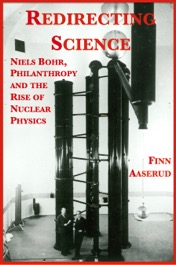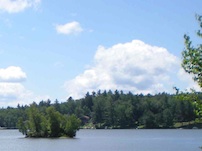 $9.99 on Kindle
$9.99 on KindleRedirecting Science: Niels Bohr, Philanthropy, and the Rise of Nuclear Physics by Finn Aaserud (118,000 words, 41 illustrations)
How and why do complex scientific disciplines such as physics change emphasis from one sub-discipline to another? Do such transitions stem entirely from developments within the discipline itself or also from external factors?
This book addresses these questions by examining the transition from atomic to nuclear physics, theoretically and experimentally, at Niels Bohr’s Institute for Theoretical Physics in Copenhagen in the 1930s. On the basis of extensive archival research, Finn Aaserud shows that the “Copenhagen spirit,” the playful research atmosphere under Bohr’s fatherly guidance that permeated the Institute, thrived because of extra-scientific circumstances that Bohr exploited to the fullest, such as the need to help Jewish physicists out of Hitler’s Germany and the changing funding policies of private foundations, notably those of the Rockefeller Foundation which made it opportune to introduce research in experimental biology at the Institute.
“A clear, carefully developed and substantially convincing argument... Aaserud gives a detailed and impressively documented account of the direction of Bohr’s scientific interests... Aaserud is... to be congratulated for his original, clear — indeed, didactic — work of scholarship and enlightenment.” — Paul Forman, Physics Today
“A professional historian’s study of the happenings at the Niels Bohr Institute in the decisive years 1930 to 1940... In particular, the... support of the Institute by Danish and other foundations, mainly the Rockefeller Foundation, are treated in great detail, revealing many interesting aspects of these relationships... The detailed accounts... of Bohr’s negotiations are a testimony to Bohr’s uncanny ability to get what he wanted from the various foundations... Aaserud’s book is an invaluable source of information [showing] that Bohr was not only an inspiring physicist and philosopher but also a cunning negotiator who knew how to make use of his great reputation for the benefit of science.” — Victor F. Weisskopf, Science
“Aaserud elucidates Bohr’s skills not only as mentor and guiding hand behind the ‘Copenhagen spirit,’ but also as financial negotiator.” — Neil Wasserman, Isis, A Journal of the History of Science Society
“This book teaches us that running such [a truly elite] institution required entrepreneurial skills as well as scientific genius. Bohr had an abundance of both.” — Jeremy Bernstein, Nature
“Redirecting Science is the history of Bohr’s institute during the 1930s when it experienced a drastic change in its research priorities, from a laissez-faire mode of work and lack of clearly defined research programme to a concerted research effort in nuclear physics and experimental biology... Aaserud gives a highly interesting account of the interaction between physics and biology... Aaserud’s carefully documented work is an excellent example of how institutional history may transcend social and institutional limitations and integrate also conceptual history of science.” — Helge Kragh, Centaurus
“By showing that a new research programme at one of the most important scientific institutes in the world was triggered, and pushed forward, by social and financial considerations, this book delivers yet another blow to the tired old idea that scientific knowledge is driven by its own internal, inexorable logic. It also throws valuable light on Bohr’s activities and strategies as a fundraiser and institution builder.” — John Krige, The British Journal for the History of Science



